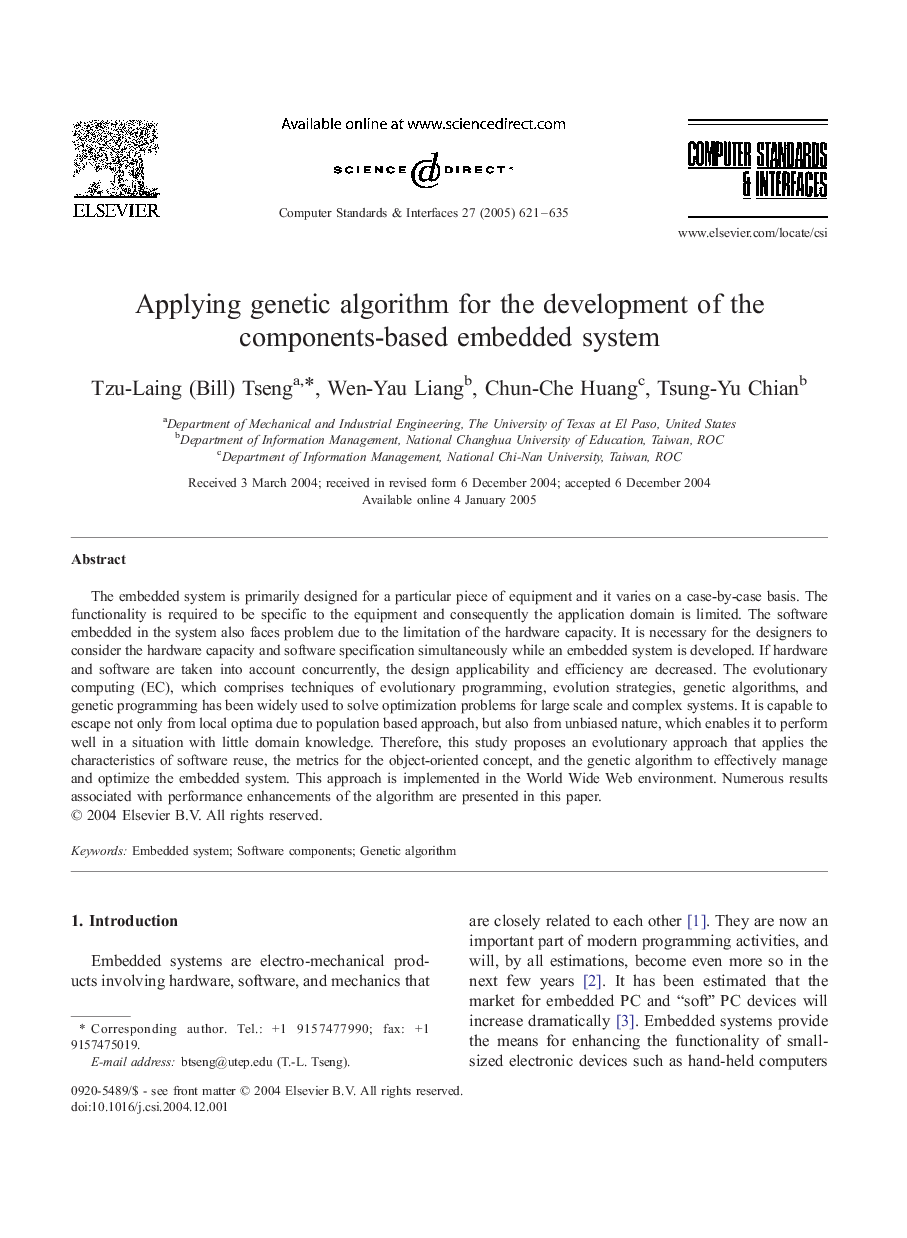| Article ID | Journal | Published Year | Pages | File Type |
|---|---|---|---|---|
| 10341161 | Computer Standards & Interfaces | 2005 | 15 Pages |
Abstract
The embedded system is primarily designed for a particular piece of equipment and it varies on a case-by-case basis. The functionality is required to be specific to the equipment and consequently the application domain is limited. The software embedded in the system also faces problem due to the limitation of the hardware capacity. It is necessary for the designers to consider the hardware capacity and software specification simultaneously while an embedded system is developed. If hardware and software are taken into account concurrently, the design applicability and efficiency are decreased. The evolutionary computing (EC), which comprises techniques of evolutionary programming, evolution strategies, genetic algorithms, and genetic programming has been widely used to solve optimization problems for large scale and complex systems. It is capable to escape not only from local optima due to population based approach, but also from unbiased nature, which enables it to perform well in a situation with little domain knowledge. Therefore, this study proposes an evolutionary approach that applies the characteristics of software reuse, the metrics for the object-oriented concept, and the genetic algorithm to effectively manage and optimize the embedded system. This approach is implemented in the World Wide Web environment. Numerous results associated with performance enhancements of the algorithm are presented in this paper.
Related Topics
Physical Sciences and Engineering
Computer Science
Computer Networks and Communications
Authors
Tzu-Laing (Bill) Tseng, Wen-Yau Liang, Chun-Che Huang, Tsung-Yu Chian,
